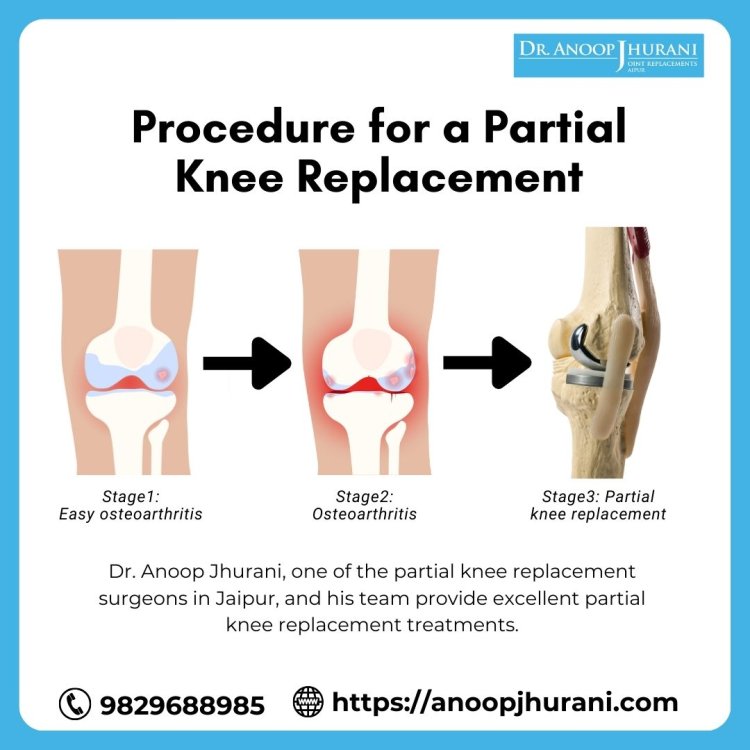The Procedure for a Partial Knee Replacement
Dr. Jhurani is the best partial knee replacement in Jaipur. Partial knee replacement surgery can replace the only broken section of a knee.
Share this Post to earn Money ( Upto ₹100 per 1000 Views )

Knee pain and limited mobility can significantly impact one's quality of life, prompting many individuals to seek effective solutions such as partial knee replacement. In recent years, advancements in medical technology have paved the way for more precise and customized procedures. The meticulous steps involved in a partial knee replacement, highlight the integration of technology for enhanced accuracy.
Patient-Specific Anatomy Assessment: Before the surgery begins, a thorough examination of the patient's anatomy is conducted. This crucial step allows for the customization of the implant to fit the unique structure of the patient's knee. Metal pins, acting as "trackers" or "arrays," are then strategically placed on the leg to provide real-time feedback to a sensor during the operation.
Imaging and Positioning: A comprehensive assessment of the patient's bone structure and anatomy follows. Utilizing advanced imaging techniques such as CT scans, the surgical team defines a set of precise positions to ensure optimal alignment of the implant with the patient's joint. This step lays the foundation for a surgical plan tailored to the individual's needs.
Ligament Tension Evaluation: The surgeon evaluates ligament tension as the knee is taken through a series of controlled movements. This step is crucial in determining the stability and functionality of the knee after the partial replacement. Contact locations between components are meticulously recorded, providing valuable information for the next stage of the procedure.
Creating a 3D Model: The gathered data is used to generate a comprehensive 3D model of the knee, illustrating how it will function post-replacement. This model aids the surgeon in making informed decisions about the placement of the implant components. It serves as a visual guide, allowing for a thorough analysis of the knee's mobility and the planned course of action.
Precision with Robotic Assistance: Armed with the 3D model and surgical plan, the surgeon, assisted by a robotic arm, proceeds to remove the targeted bone. The robot ensures that the surgical instruments adhere strictly to the predetermined plan, guaranteeing an unprecedented level of precision. This advanced technology minimizes the risk of human error and enhances the overall accuracy of the procedure.
Conclusion:
The integration of imaging, 3D modeling, and robotic assistance allows surgeons to tailor the procedure to each patient's unique anatomy, ultimately improving outcomes and accelerating recovery. Dr. Anoop Jurani embraces innovation in orthopedic surgery, offering modern partial knee replacement procedures for individuals seeking relief from knee issues.














